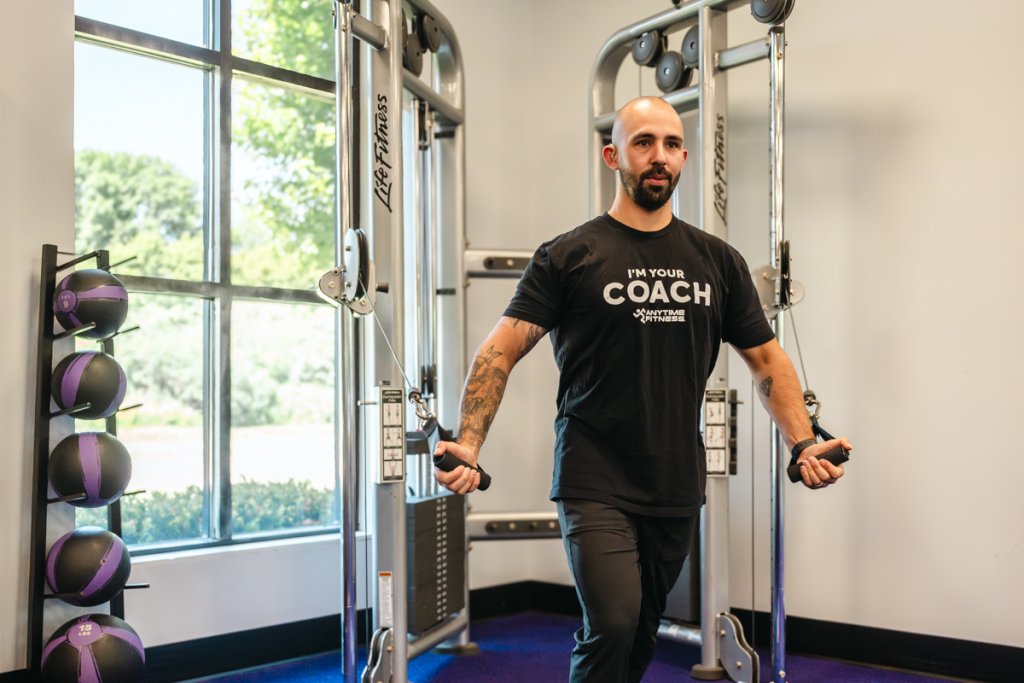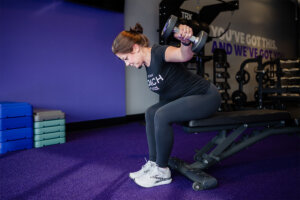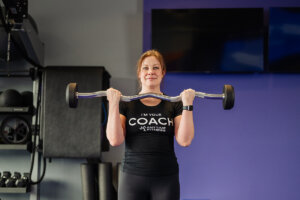When you’re strength training, targeting the right muscle groups to achieve the definition and shape you want isn’t always easy. If you’ve looked for lower pec workouts in the past but only been able to find general chest exercises, you might have been left without moves that target the right muscle groups for your goals.
That’s because while many chest exercises target the entire area, there are often slight variations needed if you want to target the lower pec muscles in particular. To help provide some guidance, we’ve put together a full-length lower chest workout to help you build a strong, sculpted lower chest.
Read on for tips on understanding chest muscle anatomy, how to make the most of your lower chest workouts, and the ultimate lower chest workout to create the shape and strength you desire.
Understanding chest muscle anatomy
The chest contains some of the most prominent muscles in the body — but they’re not just for show; they’re important for your overall health! Your chest muscles do the hard work of facilitating arm movement, stabilizing the shoulders, and even helping with breathing. Before we learn how to target the lower chest on its own, let’s explore the four main areas of the chest, their size, and function.
- Pectoralis major: This is the primary (and largest) muscle of the chest wall; it makes up most of the lower chest muscle. Thick and fan-shaped, it lies underneath the breast tissue.
- Pectoralis minor: Buried beneath the pectoralis major, this thinner, triangle-shaped muscle stretches horizontally across your ribs.
- Serratus anterior: This muscle extends from your lower shoulder to your ribs. It’s also known as “the boxer muscle” because it’s helpful in reaching or punching movements.
- Subclavius: This is the small muscle that makes your clavicle bone rise when you take a deep breath.
If your main goal in strength training is to add shape and definition to the lower chest, you’ll want to focus on lower pec workouts that target the pectoralis major. In particular, exercises that emphasize a downward pressing motion or stretch the lower fibers of this chest muscle will be your best bet.
How to work out your lower chest based on your goals
There are different ways to start training your lower chest, both through bodyweight exercises — such as different variations of push-ups — and exercises with dumbbells, barbells, or other equipment. Depending on your specific fitness goals, there are some elements to consider when incorporating lower chest exercises.
How often should I train my lower chest?
To give your muscles proper recovery time, consider training your lower chest 2 to 3 times per week. You can start by incorporating a few lower chest exercises into an existing workout and work your way up to a full-length lower chest workout that will help you build strength and definition where you want it most.
How many sets and reps should I do for the lower chest?
If you want to start building muscle mass, you might start by performing 2 to 3 sets of 8 to 12 repetitions. Remember to gradually increase the weight, sets, or reps over time to keep challenging your muscles and promoting growth.
Remember: Proper form is crucial for maximizing results and preventing injury in any strength-training regimen. Reach out to a Coach if you have questions or concerns.
Why hasn’t my lower chest grown from other chest workouts?
If previous lower chest workouts haven’t produced results, there are a few possible explanations. These include:
- Incorrect exercises: If you’re not incorporating exercises into your workouts that specifically target the lower chest area, you may not see the results you want.
- Improper form: It’s possible you’re not using the correct form during your lower pec workouts, which may inadvertently fail to target the lower chest.
- Lack of variation: Using the same lower chest exercises over and over, with the same rep range for each exercise, can eventually plateau your progress. To continue to see results, you may need to incorporate heavier weights or more repetitions, as is the case with any strength training.
- Diet and other factors: Your overall health and habits outside of the gym always have the potential to detract or help your fitness outcomes. If you don’t have the proper nutrition, including plenty of protein for muscle recovery, it’s possible it may be harder to see muscle growth or definition. Focus on other factors of your health, like diet, mindset, stress, and sleep in order to maximize your results in the gym.
Best lower chest exercises
Here are some of the best lower chest exercises to build strength and definition. Grab this list as an easy reference and find our favorites featured below in our full-length lower chest workout:
- Dip Plus
- Straight Bar Dip
- Jackhammer Pushdown
- Standing Cable LC Press
- Kneeling x Press
- D2 Flexion Crossover
- Incline Twisting Pushup
- Decline Cable Dip
- Decline Bench Press
- Decline Dumbbell Fly
- Cable Crossover
- Decline Push-Up
- Dumbbell Hip Extension Floor Press
- Incline Push-Up
- Parallel-Bar Dips
Want to add definition to your lower chest and sculpt more defined pec muscles? Try this ultimate lower chest workout. You’ll burn calories and fat while shaping stronger lower chest muscles that give you the shape and definition you want.
The Best Lower Chest Workout for Shape and Strength
Time: 30 minutes | Level: Intermediate
Equipment: Bench press, barbell, dumbbell, cable machine with pulleys, dip bar
You’ll notice that many of these moves operate on a decline; that’s because by performing these moves on a decline bench, focus is taken off the upper chest and the lower chest is targeted more intensely.
1. Decline Barbell Bench Press
The decline barbell bench press is a great move for strengthening your lower chest. Because it’s more of a compound exercise, it allows more focus to be applied to the target muscle and less to the stabilizing muscles.
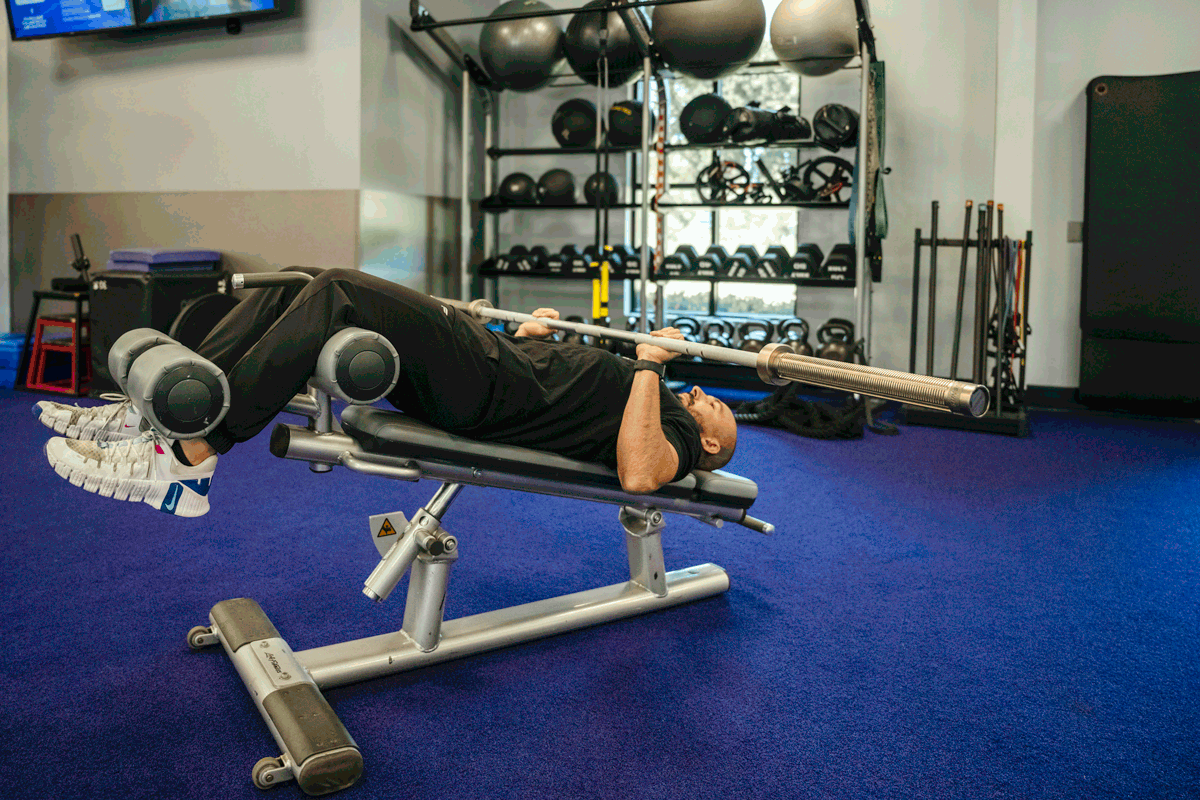
How to:
- Set your bench to a 15–30-degree angle; this is the key difference from a flat bench press.
- Lie down on the bench, and secure your feet under the hold.
- Hold the barbell with an overhand grip, hands a bit wider than shoulder-width apart.
- Raise the barbell over your shoulders. Engage your core and retract your shoulder blades to help stabilize your upper back.
- Lower the barbell until it reaches your mid-chest. Keep your elbows at a 45-degree angle from your body.
- Perform 2–3 sets of 8–12 reps.
2. Decline Dumbbell Bench Press
Don’t be fooled by the similar name to the exercise above, since using both barbells and dumbbells will engage your muscles in different ways. While a barbell’s compound nature focuses on the target muscle, the dumbbell variation tends to more effectively target the stabilizing muscles around the lower chest. By incorporating both of these moves into your workout, you’re sure to target different parts of the lower chest in one workout.
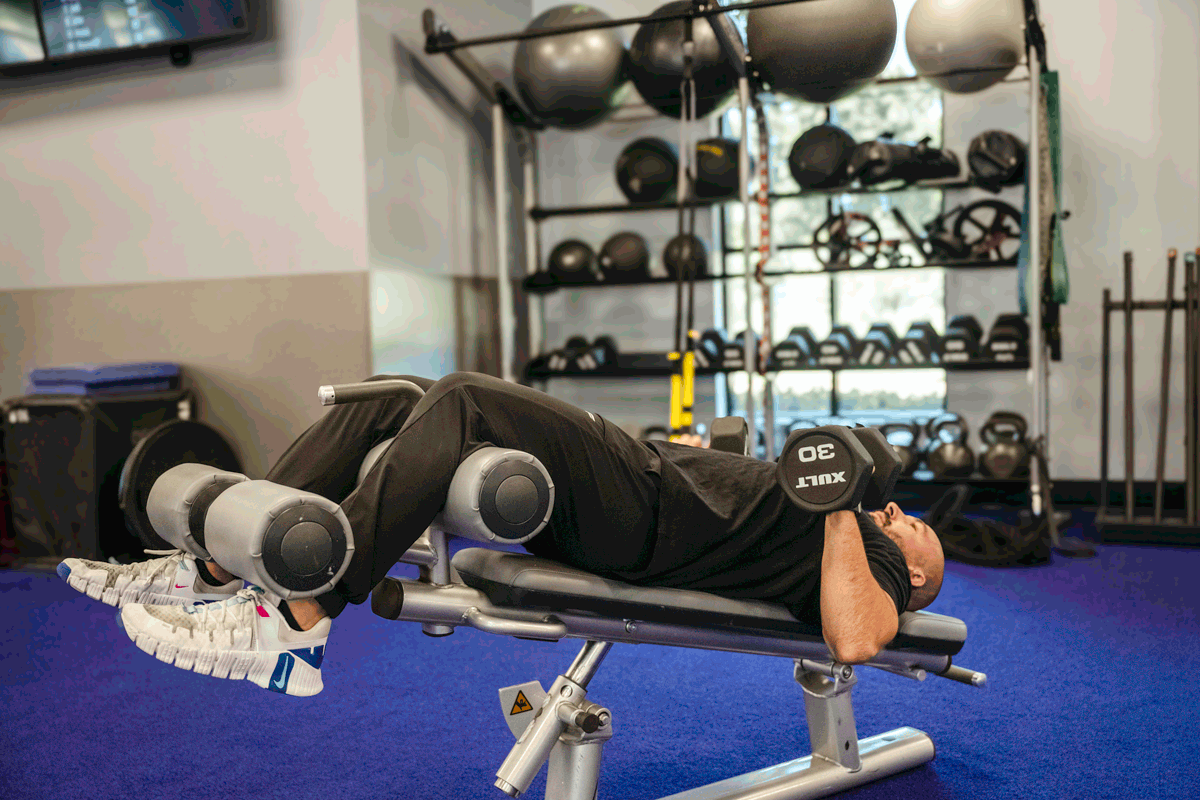
How to:
- Keep the decline bench adjusted to a 15–30-degree angle.
- Lie down on the bench with your back flat against the pad, and secure your feet.
- Pick up each dumbbell with a neutral grip. Start with the dumbbells resting on your knees or thighs.
- Press the dumbbells straight up toward the ceiling, keeping your elbows slightly bent and palms facing slightly inward.
- Slowly lower the dumbbells down in a wide arc toward the sides of your chest. Keep your elbows tucked at a 45-degree angle throughout the move.
- Perform 2–3 sets of 8–12 reps.
3. Decline Dumbbell Fly
The decline dumbbell fly is a variation on the traditional chest fly that more specifically challenges the lower pecs, helping you strengthen and define that area more effectively.
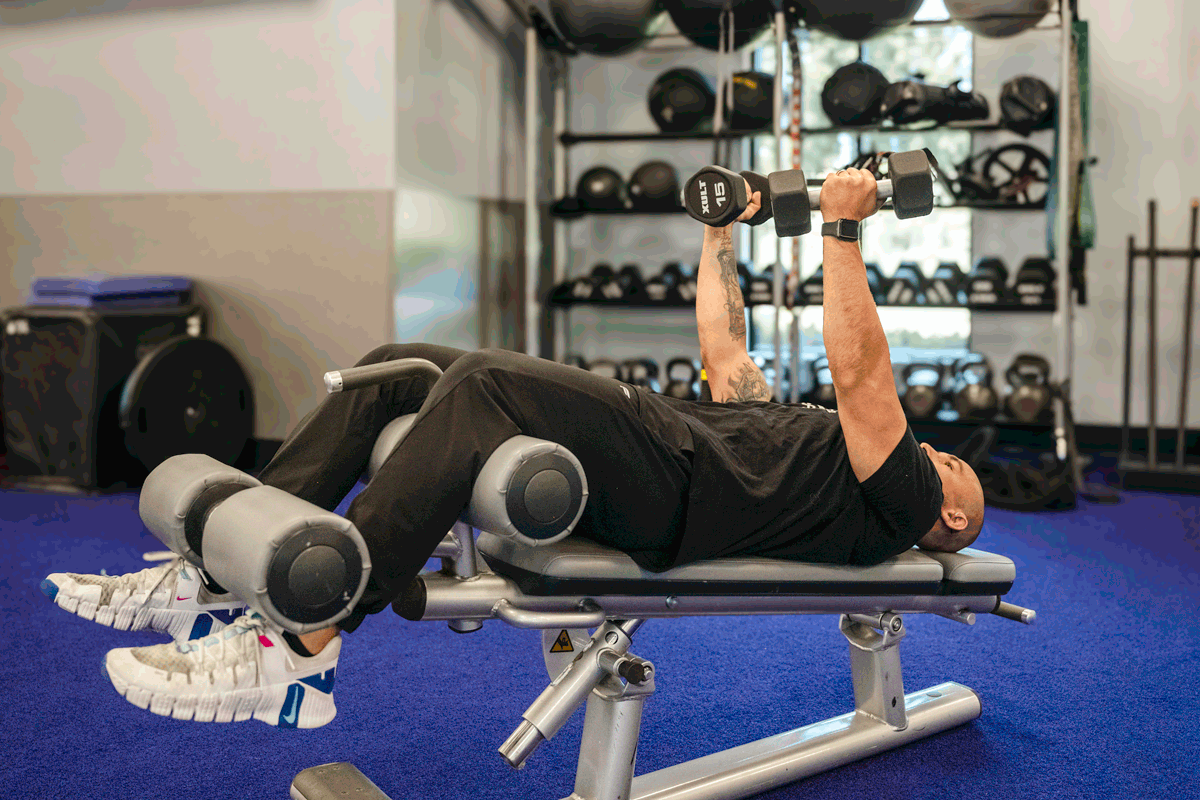
How to:
- Keep the bench adjusted to a 15–30-degree angle.
- Lie down on the bench with your back flat against the pad, and secure your feet.
- Pick up each dumbbell with a neutral grip. Start with your arms spread open at the chest.
- Press the dumbbells straight up toward the ceiling, palms facing each other, with a slight bend in your elbows. Don’t let the dumbbells touch at the top, but maintain a slight tension.
- Inhale as you slowly lower the dumbbells back down, spreading the arms.
- Perform 2–3 sets of 8–12 reps.
4. High Pulley Crossover
The high pulley crossover — also sometimes called the cable crossover or the high cable fly — uses a cable machine with adjustable pulleys.
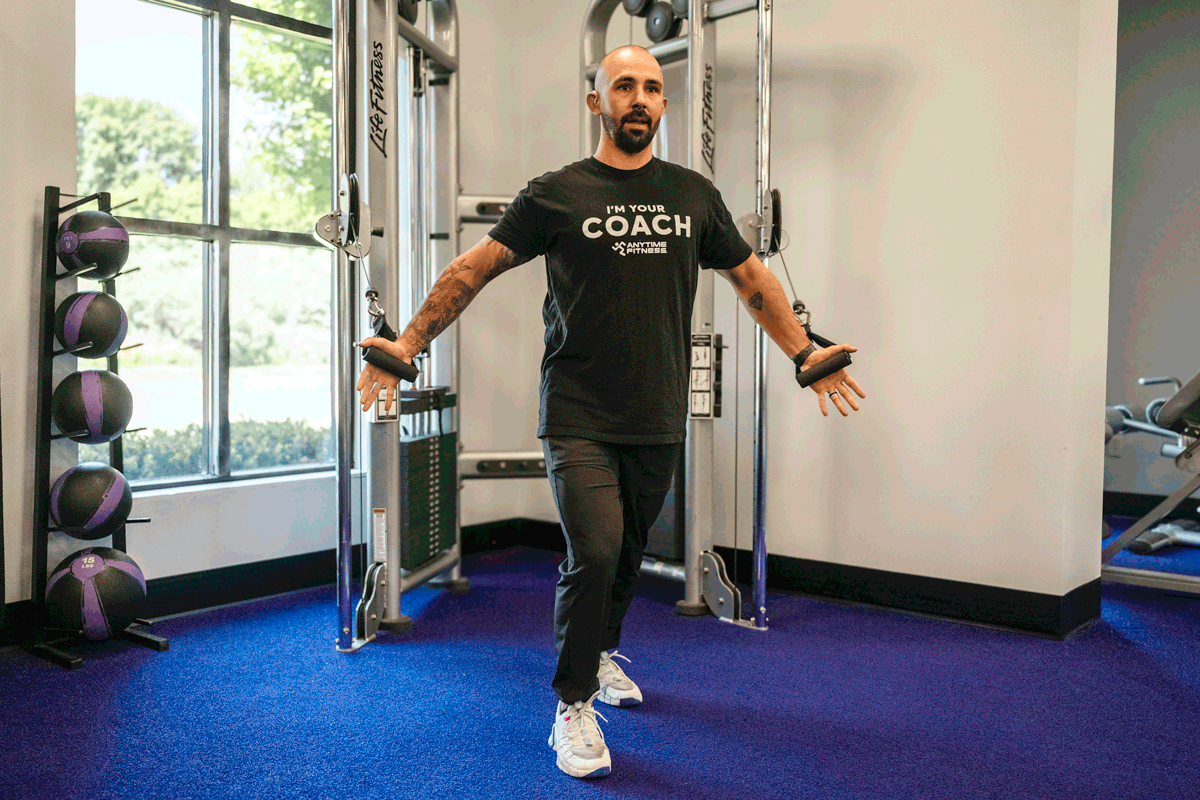
How to:
- Set the pulley height to about your chest level.
- Attach handles to the cable machine. Choose between neutral grip or palms facing down depending on your comfort.
- Start by standing with your arms extended out to the sides at about waist height. Keep a slight bend in your elbows.
- Slowly bring your hands across your body in a hugging motion, squeezing your chest muscles as you reach the center.
- Maintain control as you slowly reverse the movement, returning your arms back to starting position with arms out to the sides.
- Perform 2–3 sets of 10–15 reps.
5. Chest Dips
Chest dips are ideal for adding muscle mass to the lower pecs. All you’ll need is a dip bar and you can do as many reps as possible for two to three rounds.
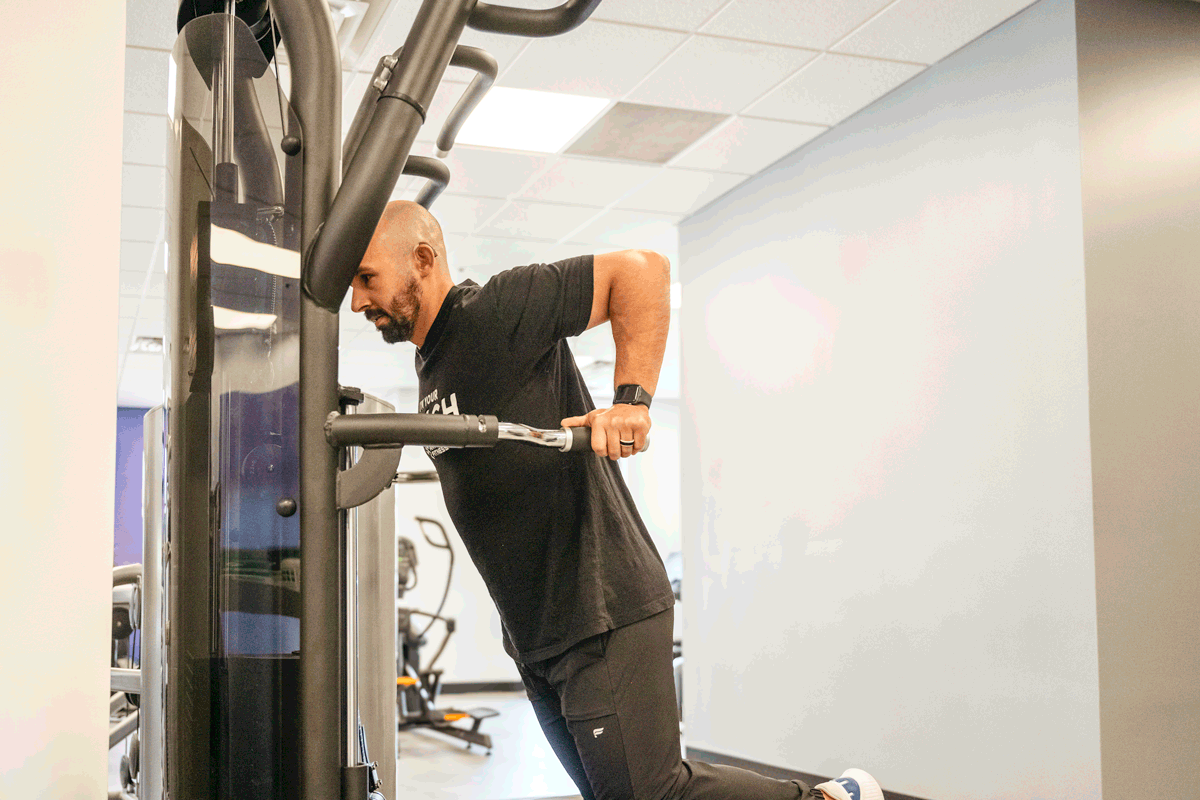
How to:
- Start by gripping the bars with your hands shoulder-width apart.
- Straighten your arms to lift yourself up so your body forms a straight line. Engage your core, keeping your shoulders back and down.
- Bending your elbows, slowly lower your body down. Keep your elbows tucked in at a 45-degree angle throughout the movement. This helps target your chest effectively.
- Lower yourself until your elbows reach a 90-degree angle or you feel a good stretch through your chest.
- At the bottom, exhale and press yourself back up. Focus on pushing with your chest while maintaining good posture.
- Perform 2–3 rounds of as many reps as possible.
A final word on lower pec workouts and lower chest exercises
If you’re hoping to gain strength and definition in your lower chest, you have to be more intentional than doing any old chest exercise. Try the lower chest workout above and feel yourself gaining strength and definition where you want it most. Remember to go slowly at first, seek out a trainer if you have questions, and consult with a doctor if you have any health concerns before starting a new strength training regimen.
Learn how 1:1 training with an Anytime Fitness Coach can help you reach your fitness goals faster.

Coach Mike Voorhees, NASM-CPT, FNS
Coach Mike found his passion for helping people working as a Coach at Anytime Fitness five years ago. Since then, he’s guided hundreds of people toward their fitness goals. Mike’s coaching philosophy resonates on and off the purple turf as he strives to help you become a stronger and more fulfilled version of yourself.
Mike received his Masters in Exercise Science from Concordia University, St. Paul. He is NASM CPT & FNS-certified and an ISSA Exercise Recovery Specialist. Other certifications include corrective exercise, pain-free performance, TRX training, kettlebell training, and more.
